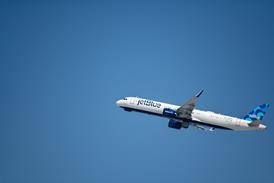Universal Avionics will double its flight-test capability by the end of February, adding a refurbished 1980 Beechcraft King Air F90 to the flight line as the Tucson, Arizona-based company seeks to expand and enrich its flight management system and cockpit upgrade product offerings.
The company says the aircraft, N20UN, will be used for "special projects" in its initial role, complementing its King Air 350, tail number N10UN. New projects will include a new and improved version of the company's Vision 1 synthetic vision system that is likely to be unveiled at the National Business Aviation Association's convention in 2009. Potential upgrades to the new synthetic vision system include a higher-resolution database, with obstacles included as well as a flightpath marker and airport depictions for the primary flight display.
From a larger perspective, Universal is likely to be experimenting with its first integrated cockpit for forward fit applications. The lack of such a cockpit has eliminated the company from recent avionics competitions for new-build business aircraft from manufacturers including Bombardier, Embraer and Gulfstream.
Universal is pursuing new technologies despite economic fears in the industry, buffered in part by steady sales in its flight management system niche. The company says it is selling several hundred of its WAAS-enabled FMS units a year to the business aviation retrofit market, representing roughly half of all its business and commercial aviation FMS sales.
With the WAAS FMS, operators can fly satellite-based lateral precision with vertical guidance (LPV) approaches in lieu of traditional Category 1 instrument approaches - those which give an aircraft horizontal and vertical guidance down to 200ft (60m) above the surface. The US Federal Aviation Administration in November reported having 1,333 LPV approaches in place at 833 airports, with an estimated 500 a year in development.
Source: Flight International























